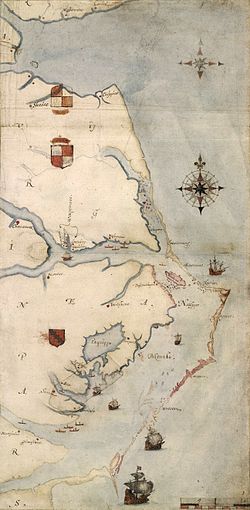 | |
| Geography | |
|---|---|
| Location | Southern Outer Banks, Carteret County, North Carolina, United States |
| Coordinates | 34°42′23″N76°27′32″W / 34.70639°N 76.45889°W |
| Administration | |
United States | |
| Nearest city | Harkers Island, NC |
| Governing body | National Park Service |
| Demographics | |
| Population | no permanent population |
| Pop. density | 0/km2 (0/sq mi) |
The Core Banks are barrier islands in North Carolina, part of the Cape Lookout National Seashore. Named after the Coree tribe, they extend from Ocracoke Inlet to Cape Lookout, and consist of two low-relief narrow islands, North Core Banks and South Core Banks, and, since September 2011, two smaller islands. New Drum Inlet, Old Drum Inlet and Ophelia Inlet now separate the islands. The Core Banks are now uninhabited. However, Portsmouth, at the north end of the North Core Banks, was once a substantial port, and Cape Lookout Village, about one and half miles south of the Cape Lookout Lighthouse, contains the historic Lookout Life-Saving Station, a U.S. Coast Guard Station, and several island homes.













